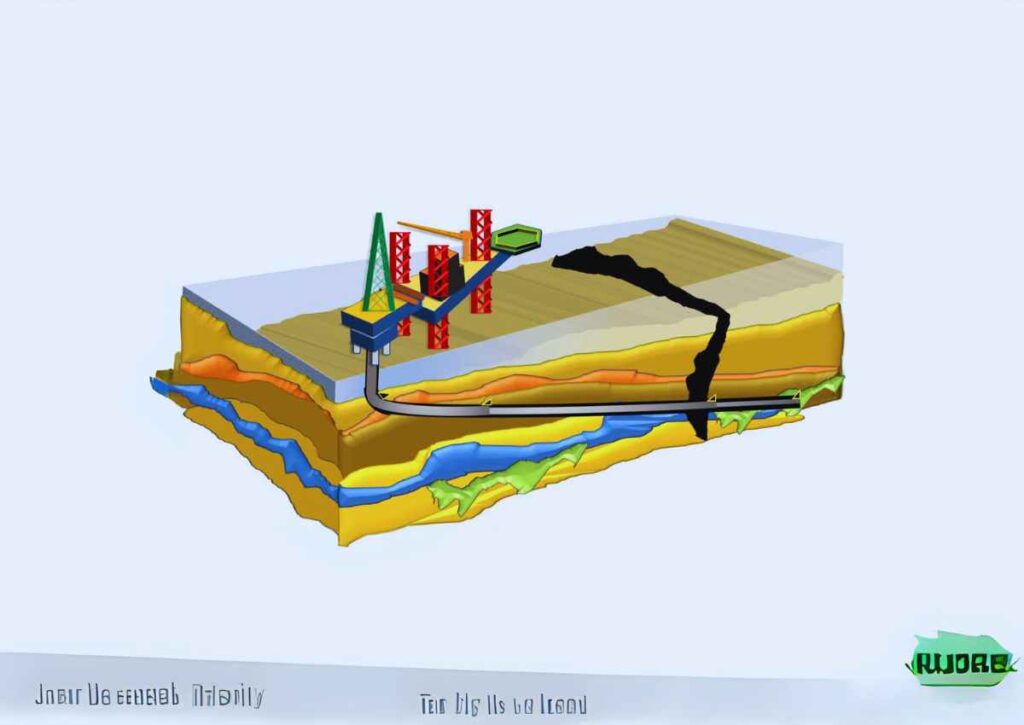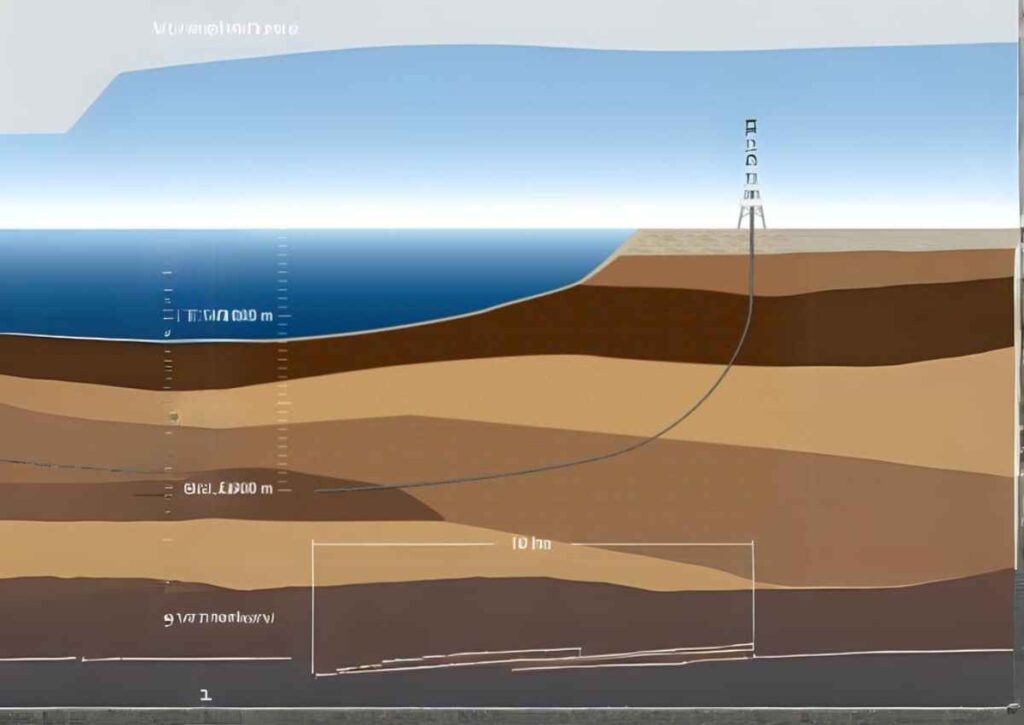In the world of oil and gas exploration, the quest for resources often leads to extreme depths and distances.
To tap into these remote reserves, engineers and geologists have developed advanced drilling techniques, one of which is Extended Reach Drilling (ERD).
This method allows operators to reach targets that were previously inaccessible using conventional drilling methods.
Let’s delve into the intricacies of ERD, exploring its plot, benefits, challenges, and what truly defines extended reach.
Understanding Extended Reach Drilling Plot
Extended Reach Drilling, often abbreviated as ERD, is a technique employed in oil and gas exploration to access reservoirs that are located at significant distances from the drilling location.
It involves drilling wells with horizontal sections that extend over long distances, sometimes reaching several miles from the drilling rig.
The plot of ERD revolves around maximising the reach of the wellbore while maintaining drilling efficiency and safety.
This technique allows operators to access multiple reservoirs from a single drilling location, reducing the need for additional drilling rigs and minimising environmental impact.
Unveiling the Benefits of Extended Reach Drilling

Cost Efficiency
ERD enables operators to access distant reservoirs without the need for multiple drilling rigs, resulting in significant cost savings.
Maximised Resource Recovery
By reaching remote reserves, ERD allows for the extraction of oil and gas that would otherwise remain untapped.
Reduced Environmental Footprint
Consolidating drilling operations at a single location minimises disturbance to the surrounding environment and reduces emissions associated with drilling activities.
Enhanced Reservoir Management
ERD provides access to reservoirs from various angles, allowing for better reservoir management and optimisation of production.
Defining Extended Reach: What Constitutes Extended Reach?
Extended reach is typically defined by the horizontal displacement of the wellbore from the drilling location.
While there is no universal threshold, wells with horizontal sections exceeding 10,000 feet (approximately 3,048 metres) are commonly considered to be extended-reach wells.
However, advancements in drilling technology continue to push this boundary, with some ERD wells reaching horizontal lengths exceeding 40,000 feet (approximately 12,192 metres).
Navigating the Challenges of Extended Reach Drilling

Despite its numerous benefits, extended-reach drilling presents several challenges that must be overcome.
Drilling Dynamics
Longer horizontal sections increase the complexity of drilling operations, requiring careful management of drilling parameters to avoid issues such as wellbore instability and tool wear.
Wellbore Placement
Precise wellbore placement is crucial in ERD to ensure that the target reservoir is effectively penetrated.
Deviations from the planned trajectory can lead to missed targets or unwanted fluid communication between formations.
Equipment Limitations
ERD requires specialised equipment capable of withstanding the high pressures and temperatures encountered at extended depths.
Additionally, the logistics of handling long sections of drill pipe pose logistical challenges.
Reservoir Management
Accessing remote reservoirs introduces complexities in reservoir management, including reservoir characterization, fluid dynamics, and production optimisation.
Embracing Innovation in Extended Reach Drilling
To address these challenges, the oil and gas industry continues to innovate in the field of extended reach drilling:
Advanced Drilling Technologies
Innovations such as rotary steerable systems, downhole motors, and advanced drilling fluids enhance drilling efficiency and accuracy in ERD operations.
Real-Time Monitoring
The integration of sensors and telemetry systems enables real-time monitoring of drilling parameters, allowing operators to make informed decisions and mitigate drilling risks.
Data Analytics
Advanced data analytics techniques are employed to analyse drilling data and optimise wellbore trajectories, enhancing drilling performance and reservoir recovery.
Continuous Improvement
Collaboration between operators, drilling contractors, and service providers fosters a culture of continuous improvement, driving innovation and efficiency in ERD operations.
Conclusion

Extended Reach Drilling represents a significant advancement in the oil and gas industry, enabling operators to access remote reserves with unprecedented efficiency and accuracy.
By overcoming the challenges associated with drilling at extreme depths and distances, ERD plays a crucial role in maximising resource recovery while minimising environmental impact.
As technology continues to evolve, the scope of ERD will undoubtedly expand, unlocking new frontiers in oil and gas exploration.
FAQs
What distinguishes Extended Reach Drilling (ERD) from conventional drilling methods?
ERD involves drilling wells with horizontal sections that extend over long distances from the drilling location, whereas conventional drilling methods typically focus on vertical or moderately inclined wells.
ERD allows operators to access remote reservoirs that were previously unreachable using conventional techniques.
How do operators ensure precise wellbore placement in extended-reach drilling?
Precise wellbore placement in ERD is achieved through advanced directional drilling techniques and real-time monitoring systems.
Operators use tools such as rotary steerable systems and downhole motors to control the trajectory of the wellbore and adjust drilling parameters in real-time based on geological data and formation characteristics.
What are the environmental benefits of extended-reach drilling?
ERD offers several environmental benefits, including a reduced surface footprint, minimised disturbance to sensitive ecosystems, and lower emissions associated with drilling operations.
By consolidating drilling activities at a single location, ERD helps mitigate environmental impacts compared to traditional drilling methods.
How do operators manage the challenges of drilling at extreme depths in ERD?
Operators employ a combination of advanced drilling technologies, well planning strategies, and meticulous wellbore design to overcome the challenges of drilling at extreme depths in ERD.
Additionally, continuous monitoring and data analysis allow operators to adapt to changing downhole conditions and optimise drilling performance.
What role does innovation play in advancing extended-reach drilling?
Innovation is critical to advancing ERD techniques and overcoming technical challenges.
The development of advanced drilling technologies, real-time monitoring systems, and data analytics tools enables operators to push the boundaries of ERD, reaching deeper and more distant reservoirs with greater efficiency and accuracy.
Also Read
Swivel Drilling: Enhancing Precision in Drill Operations
Drill Line: Enhancing Efficiency With Precision Drilling
Planting the Future: How Seed Drills and Seed Funnels Revolutionize Agriculture









